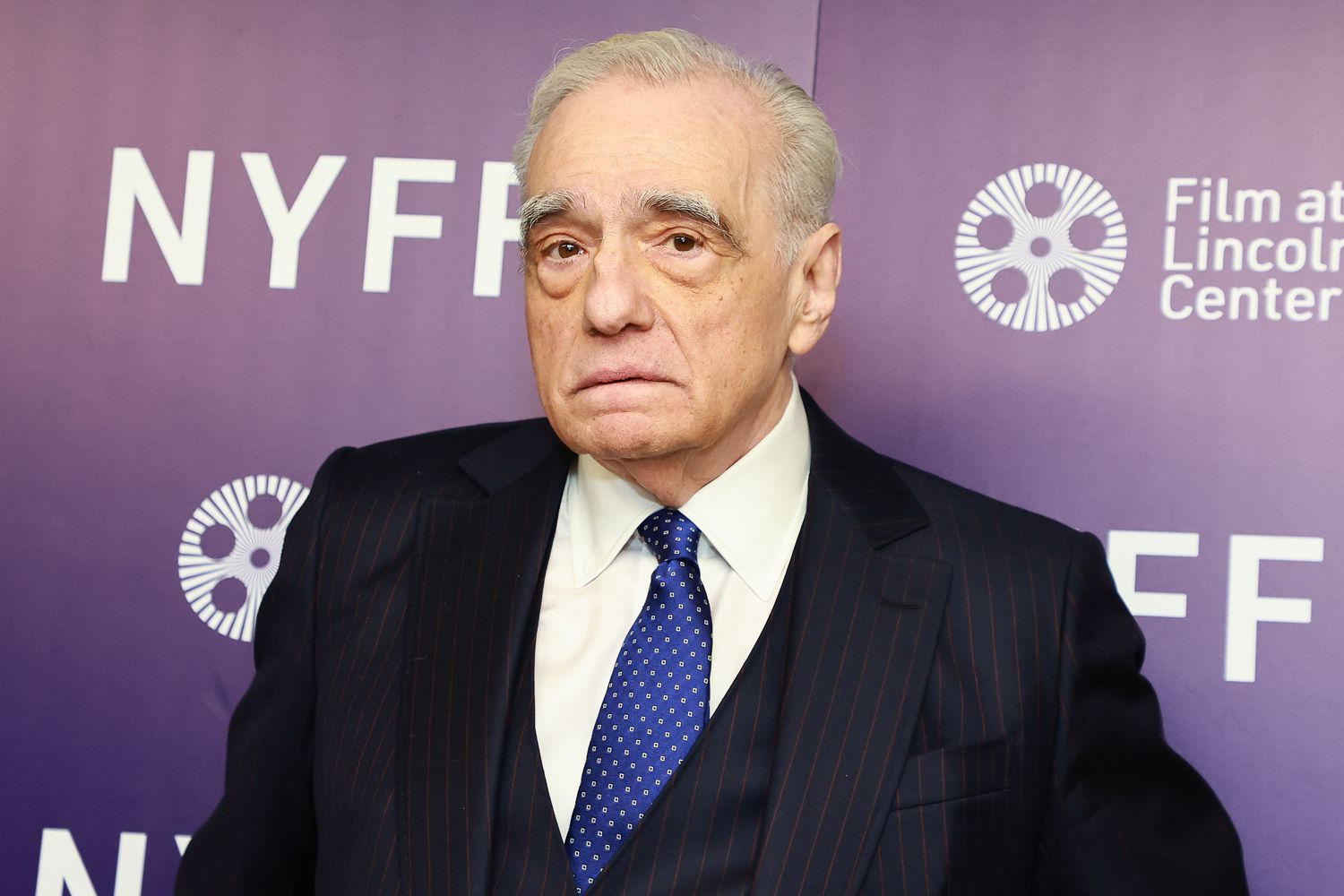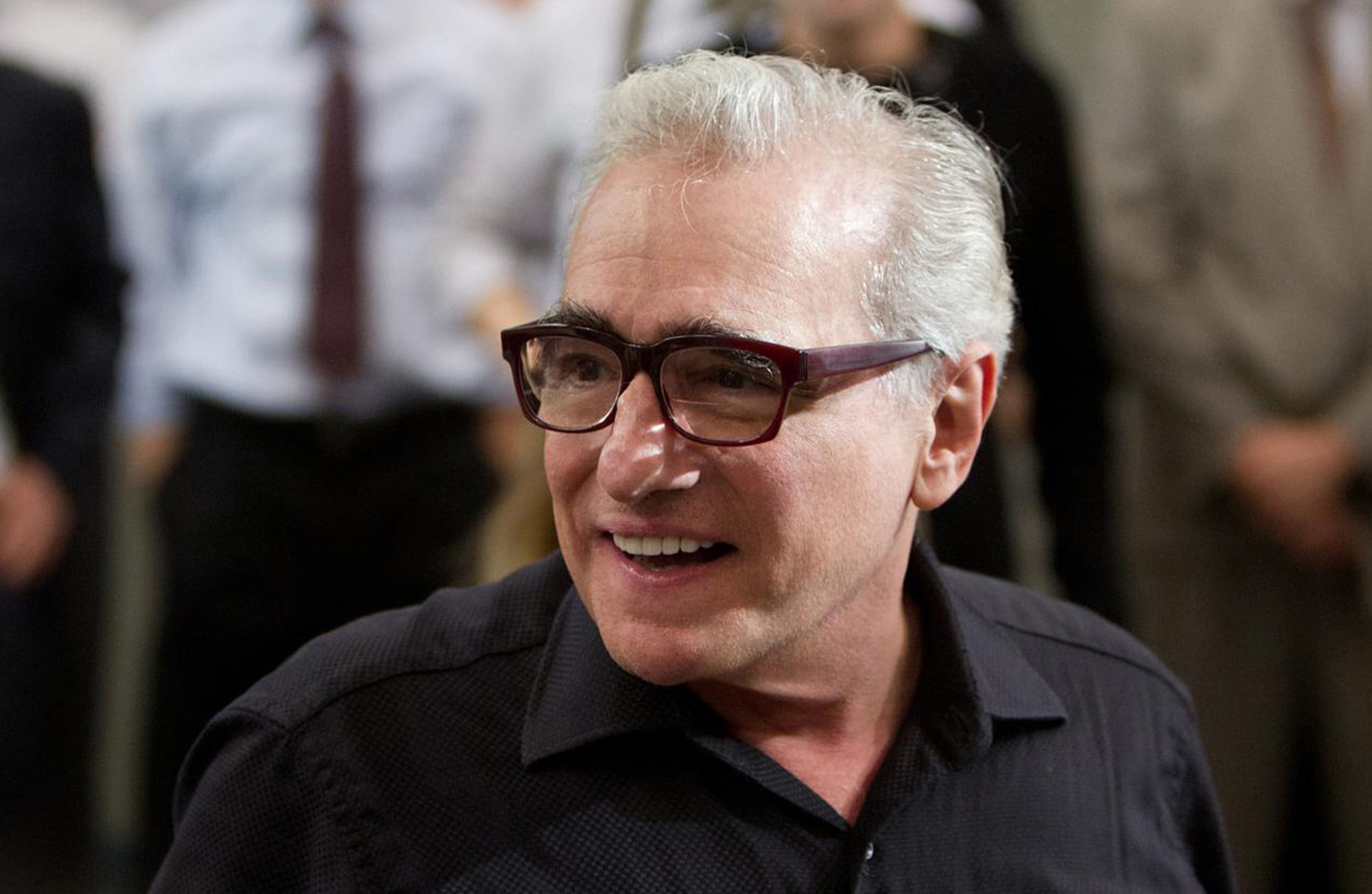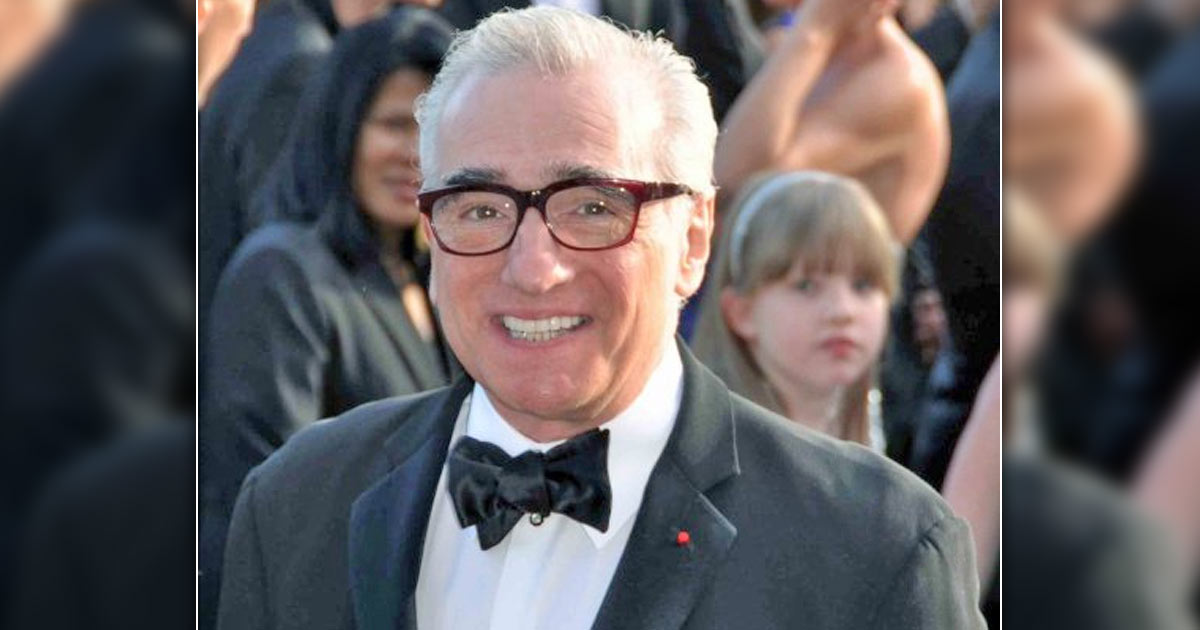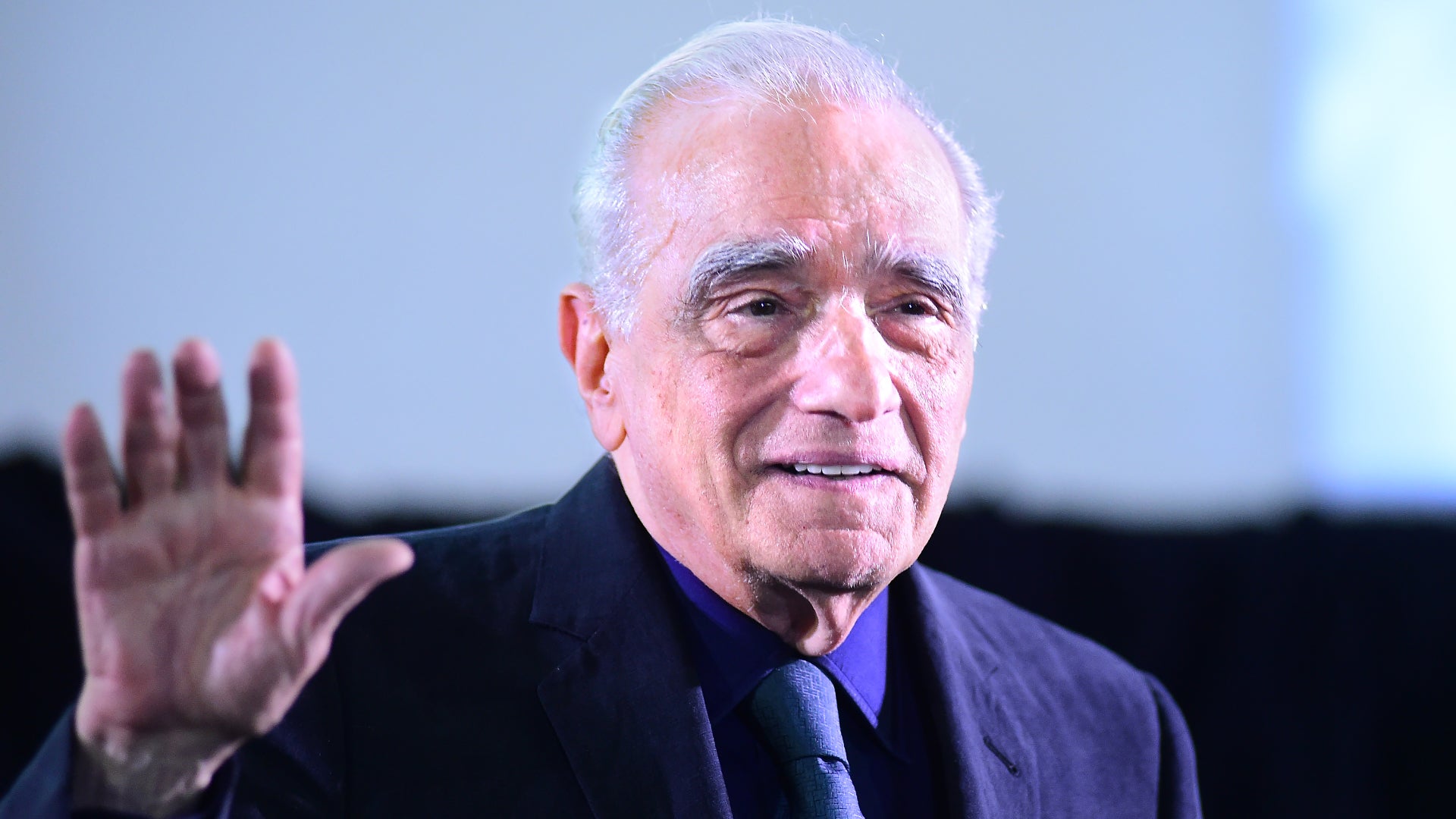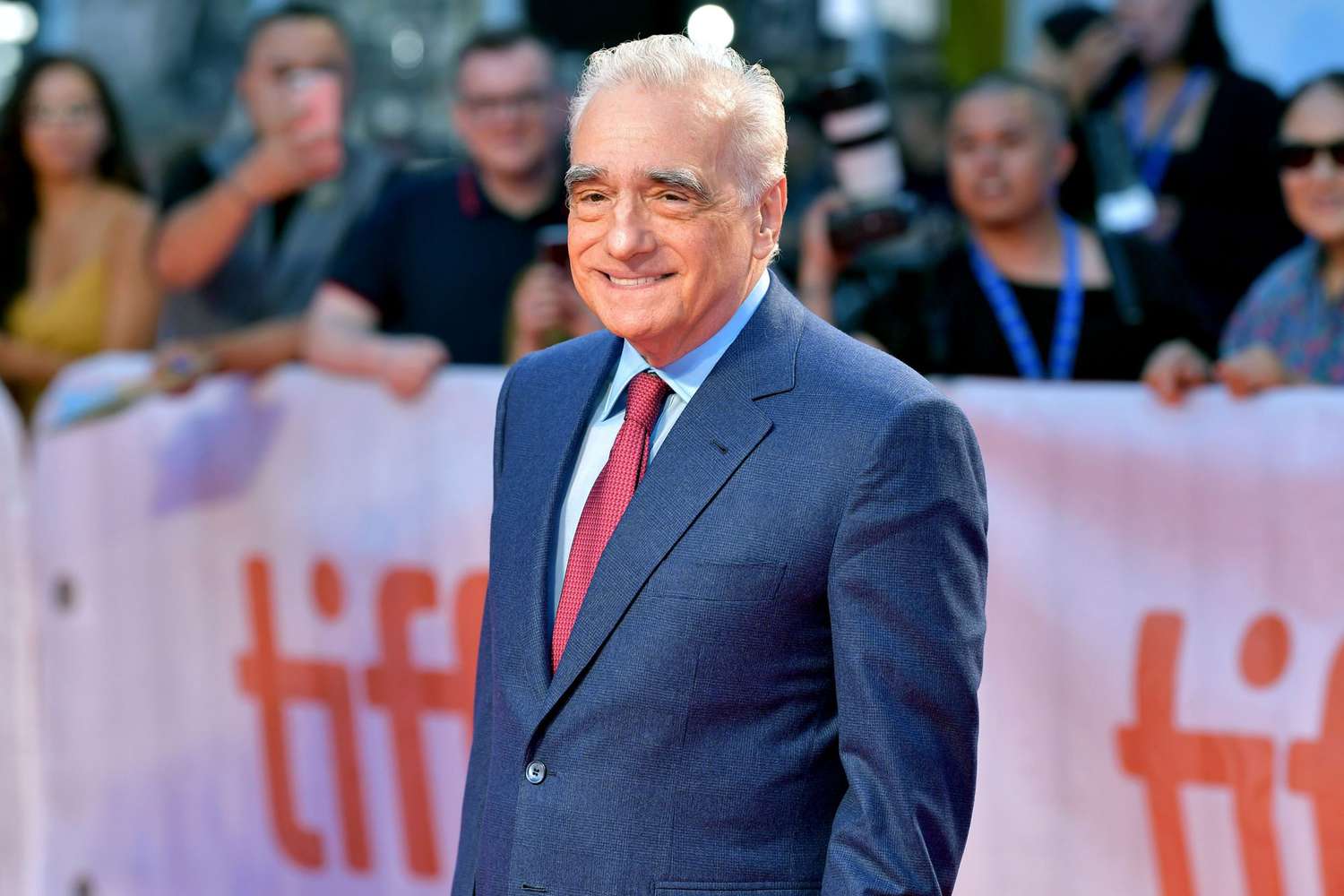What Makes Martin Scorsese A Master Filmmaker?
Explore the cinematic journey of Martin Scorsese, a visionary director and storyteller, as we delve into his iconic films, collaborations, and lasting impact on the world of cinema. Discover the enduring legacy of a true maestro in this tribute to Martin Scorsese's extraordinary career.
Author:James PierceReviewer:Emily SanchezJan 23, 20241.5K Shares57.7K Views
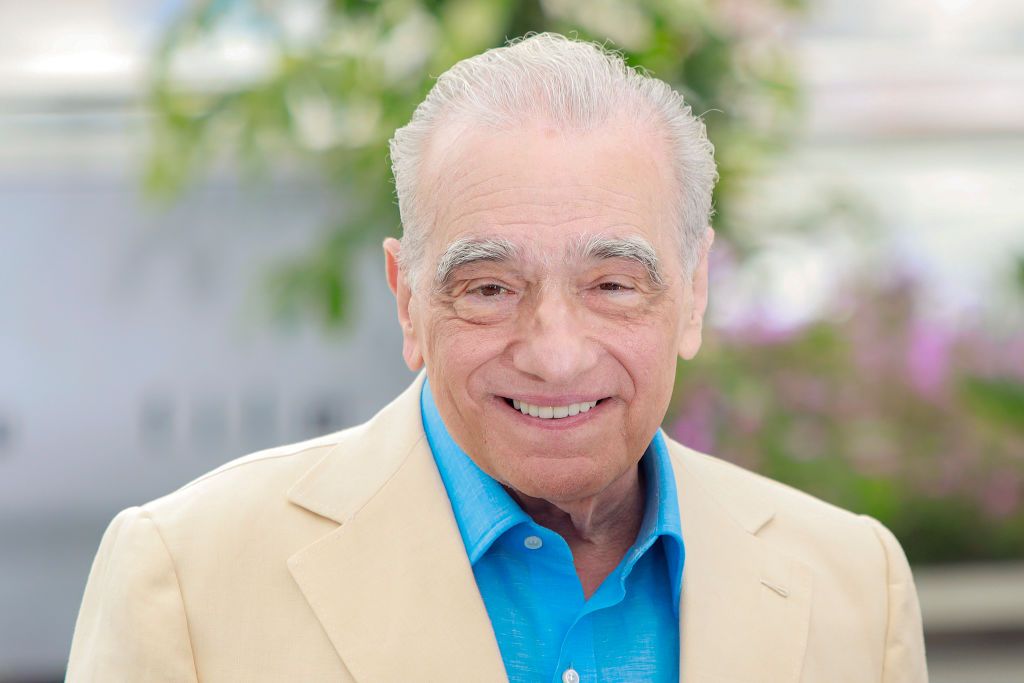
In the vast tapestry of cinematic history, certain names resonate as luminaries, shaping the art form itself. Among these titans, one name stands out - Martin Scorsese. Born in the heart of New York City and raised in the folds of a devout Italian-American family, Scorsese's journey through the lens of storytelling has left an indelible mark on the world of cinema. As a visionary director, producer, and storyteller, his career spans over five decades, a testament to his enduring influence on the craft. This exploration delves into the life, career, and lasting legacy of the cinematic maestro, Martin Scorsese.
Quick Facts About Martin Scorsese
| Name | Martin Charles Scorsese |
| Birthday | November 17, 1942 |
| Profession | Director, producer |
| Net worth | $200 million |
Early Life Of Martin Scorsese
The tale of Martin Charles Scorsese begins on November 17, 1942, amid the bustling streets of New York City's Flushing neighborhood. Nestled in the heart of Little Italy in Manhattan, his upbringing by Italian American parents painted a vivid backdrop, reminiscent of a Sicilian village.
In the rich tapestry of Scorsese's early life, the influence of his parents, Charles and Catherine, was palpable. Both dabbling in the world of acting, they unwittingly laid the groundwork for their son's deep-seated passion for cinema. The bohemian charm of Little Italy, combined with the familial connection to acting, served as the first act in Scorsese's love affair with the world of stories on the silver screen.
However, a formidable challenge loomed over Scorsese's childhood in the form of severe asthma. This limitation redirected his energies from sports fields to the flickering lights of the television and the enchanting ambiance of movie theaters. It was here, in the darkened theaters, that he found solace and inspiration, particularly in narratives portraying the Italian experience and the works of directors Michael Powell and Emeric Pressburger.
By the tender age of 12, Scorsese had already begun crafting his visual tales, sketching storyboards with a signature line that foretold his destiny: "Directed and Produced by Martin Scorsese." The seed of a filmmaking prodigy had been planted.
Despite his childhood enthusiasm for cinema, Scorsese's parents couldn't entirely fathom his fervor for the medium. Undeterred, young Scorsese continued to cultivate his passion. A turning point came when a 10-minute comedy short, a manifestation of his burgeoning talent, earned him a $500 scholarship to New York University.
Martin Scorsese Early Career
In the hallowed halls of NYU, Scorsese honed his skills, creating a tapestry of short films that foreshadowed the brilliance to come. Upon graduating, he briefly donned the mantle of a film instructor at the very institution that had shaped his artistic sensibilities. His students included notables such as Jonathan Kaplan and Oliver Stone, a testament to his early influence as a mentor.
In 1968, Scorsese unveiled his maiden feature-length film, "Who’s That Knocking at My Door?" This project not only marked the inception of his directorial prowess but also served as a fateful meeting ground for talents that would shape his cinematic journey. It was here that Scorsese crossed paths with the likes of Harvey Keitel, a collaborator who would grace many future projects, and Thelma Schoonmaker, an editor with whom he would share a creative synergy spanning over five decades.
Film criticRoger Ebert, recognizing Scorsese's emerging genius, became an early admirer, lauding his work as "artistically satisfying and technically comparable to the best films being made anywhere." This validation from a seasoned critic added a layer of credibility to Scorsese's burgeoning career.
The turning point came with the release of "Mean Streets" in 1973, just a month shy of Scorsese's 31st birthday. Widely acknowledged as a masterpiece, the film revisited characters from his earlier work, "Who’s That Knocking at My Door?" It was a manifestation of Scorsese's evolving style, showcasing dark themes, unsympathetic lead characters, religious motifs, Mafia narratives, avant-garde camera techniques, and an infusion of contemporary music - a concoction that would become emblematic of his filmmaking.
"Mean Streets" not only solidified Scorsese's reputation as a cinematic virtuoso but also forged a dynamic partnership with actor Robert De Niro, one that would become legendary in Hollywood history. The film left an indelible mark on those who witnessed it, with actor Ellen Burstyn, so impressed, advocating for Scorsese to direct the 1974 film "Alice Doesn’t Live Here Anymore."
Burstyn's collaboration with Scorsese was, in her own words, "one of the best experiences I’ve ever had," a sentiment echoed by many who found themselves touched by the magic of Scorsese's early career.
Acclaimed ’70s And ’80s Movies Of Martin Scorsese
In 1976, Scorsese unleashed "Taxi Driver," a cinematic tour de force that transcended traditional storytelling. Starring Robert De Niro as a mentally unstable cab driver and Vietnam veteran, the film laid bare the gritty underbelly of New York City's crime and decay.
A cinematic masterpiece, "Taxi Driver" not only defined Scorsese's signature filmmaking style with its complex camera movements but also earned him the prestigious Palme d’Or at the Cannes Film Festival. The movie's impact was profound, etching De Niro's status as a cinematic legend while, unfortunately, serving as an unwitting inspiration for the disturbed John Hinckley Jr.'s attempt to assassinate President Ronald Reagan five years later.
Undeterred by the challenges, Scorsese and De Niro reunited for "New York, New York" in 1977, a musical imbued with Scorsese's distinct directorial flair. Though a box-office setback and a trying experience for Scorsese, it paved the way for the director to pivot his lens toward the music industry.
The result was "The Last Waltz" (1978), a documentary immortalizing the farewell performance of The Band, enriched by guest appearances from musical luminaries like Van Morrison, Bob Dylan, and Muddy Waters. Beyond its acclaim as one of the greatest concert films, "The Last Waltz" even earned the unique honor of being spoofed in the iconic 1984 mockumentary, "This Is Spinal Tap."
In 1980, Scorsese unleashed "Raging Bull," a sports drama that delved into the turbulent life of boxer Jake LaMotta. Defying expectations after the tumultuous "New York, New York," Scorsese poured his creative soul into what would become one of the greatest films of all time. Despite initial mixed reactions owing to its violent nature, "Raging Bull" earned Robert De Niro an Oscar for Best Actor, securing its place in the pantheon of cinematic greatness.
The 1980s saw Scorsese navigating varied genres with finesse. Teaming up with De Niro once again, he delivered the dark comedy "The King of Comedy" (1982), unraveling the dangerous obsession of an aspiring comedian. A shift to the realm of sports brought forth "The Color of Money" (1986), a box-office triumph starring Tom Cruise and the legendary Paul Newman reprising his iconic role.
However, Scorsese's audacity reached its zenith with "The Last Temptation of Christ" (1988). Controversial and provocative, the film portrayed Jesus Christ, embodied by Willem Dafoe, grappling with fear, temptation, and doubt. Despite facing vehement criticism and death threats from some factions of the Catholic Church, the film garnered critical acclaim and earned Scorsese an Oscar nomination.
Martin Scorsese Continued Success
As the cinematic tapestry unfolded into the 1990s, Martin Scorsese continued his exploration of the underworld with two seminal Mafia films that would etch his name even deeper into the annals of film history: "Goodfellas" (1990) and "Casino" (1995).
While jesting about the prospect of creating "another film about Italian Americans where they’re not gangsters," Scorsese maintained a conviction that onscreen violence, when purposeful, serves as a visceral exploration of human nature.
"Goodfellas," adapted from Nicholas Pileggi’s nonfiction book "Wiseguy," delved into the tumultuous life of Lucchese crime family associate Henry Hill. Starring Ray Liotta as Hill, Robert De Niro as the enigmatic Jimmy Conway, and Joe Pesci in an Oscar-winning tour de force as the dangerously volatile Tommy DeVito, the film captivated audiences and critics alike. Roger Ebert hailed it as "the best mob movie ever," solidifying its status as one of Scorsese's crowning achievements.
In the cinematic continuum, "Casino" followed, reuniting Scorsese with De Niro and Pesci. This 1995 opus explored the rise and fall of the gambling underworld in 1970s Las Vegas. While not reaching the same heights of acclaim as "Goodfellas," the film garnered praise, particularly for Sharon Stone's Oscar-nominated performance.
Amidst the crime saga, Scorsese displayed his versatility with the psychological thriller "Cape Fear" (1991), where De Niro portrayed the psychopathic but intelligent murderer Max Cady. Following this, Scorsese embarked on ambitious projects like "Kundun" (1997) and the psychological drama "Bringing Out the Dead" (1999), showcasing his ability to transcend the crime genre.
Returning to his roots in gritty storytelling, Scorsese unveiled "Gangs of New York" (2002), a historical drama set against the backdrop of feuding Irish immigrants in 1860s New York City. Born out of Scorsese's connection to the tales of old gangs from his upbringing in Little Italy, the film was a passion project that took nearly 25 years to materialize.
Starring Daniel Day-Lewisin a riveting portrayal of gang leader Bill the Butcher and marking the initiation of a prolific collaboration with Leonardo DiCaprio, "Gangs of New York" showcased Scorsese's ability to infuse historical drama with the same intensity and authenticity as his crime epics.
The Aviator, The Departed, And Wolf Of Wall Street
In the intricate dance of actor-director partnerships, few pairings have garnered as much acclaim and reverence as the dynamic duo of Martin Scorsese and Leonardo DiCaprio.
Their collaboration, spanning seven movies to date, has produced cinematic gems that stand testament to their artistic camaraderie. "The Aviator" (2004), a narrative exploration of the enigmatic business magnate Howard Hughes, marked a turning point for both Scorsese and DiCaprio.
The film not only clinched the 2005 Golden Globe for Best Drama but also earned DiCaprio the accolade of Best Actor in a Drama Motion Picture. The dynamic storytelling and DiCaprio's nuanced portrayal contributed to the critical and commercial success of the film, with eleven Oscar nominations and five Academy Awards, solidifying its status as a cinematic masterpiece.
Their collaboration continued with "The Departed" (2006), a gripping remake of the Hong Kong film "Infernal Affairs." DiCaprio's portrayal of undercover state trooper Billy Costigan in a web of deception earned him acclaim, while the film itself secured the coveted Academy Award for Best Picture. Scorsese, after five previous nominations, finally grasped the Oscar for Best Director, a momentous milestone celebrated with humor and humility in his acceptance speech.
In the wake of this triumph, Scorsese and DiCaprio ventured into uncharted territory with "Hugo" (2011), a visually enchanting adventure drama shot entirely in 3D. Despite not achieving blockbuster success, the film received widespread critical acclaim, earning 11 Academy Award nominations and a Golden Globe for Best Director. The collaboration showcased Scorsese's ability to transcend genres, marking a departure from the crime dramas that had become synonymous with his name.
"The Wolf of Wall Street" (2013) marked another chapter in their cinematic journey, with DiCaprio portraying the real-life investment banker Jordan Belfort. While the film garnered positive reviews and five Academy Award nominations, including Best Picture, Best Actor, and Best Director for Scorsese, it also faced criticism for allegedly glorifying Belfort's illicit actions and ethical lapses.
Despite controversies, "The Wolf of Wall Street" etched its place in cinematic history, not only for its storytelling but also for setting a Guinness World Record for the most instances of swearing in a film.
The Irishman And Killers Of The Flower Moon
Following the resounding success of "The Wolf of Wall Street," Scorsese delved into the past with the epic historical drama "Silence" (2016). Starring Andrew Garfield and Adam Driver as 17th-century Jesuit priests navigating the complex terrain of Japan during a time when Catholicism faced persecution, the film grappled with profound questions of faith and loss. Scorsese's long-standing desire to adapt Shūsaku Endō’s novel materialized, resulting in a film that, despite positive reviews, faced challenges at the box office.
In 2019, Scorsese orchestrated a cinematic reunion with De Niro, alongside stalwart collaborators Keitel and Pesci, for the Netflix feature "The Irishman." A saga based on the confessions of hitman Frank Sheeran regarding the alleged murder of union boss Jimmy Hoffa, the film marked Scorsese's first collaboration with iconic actor Al Pacino, who portrayed Hoffa.
With a production cost exceeding $150 million, propelled by cutting-edge de-aging technology, "The Irishman" earned critical acclaim despite its financial challenges. The narrative unfolded as a poignant exploration of loyalty, betrayal, and the inexorable passage of time.
Hot on the heels of "The Irishman," Scorsese's cinematic prowess manifested in "Killers of the Flower Moon," released in October 2023. This cinematic opus, the seventh collaboration with DiCaprio and the eleventh with De Niro, delves into the haunting real-life murders on the Osage Nation Reservation in 1920s Oklahoma.
DiCaprio, portraying Ernest Burkhart, intricately weaves a tale of conspiracy and trust, supported by Lily Gladstone's compelling portrayal of Mollie Kyle. Despite setbacks, including filming delays due to the COVID-19 pandemic and a ballooning budget of $200 million, the film garnered widespread praise after its premiere at the Cannes Film Festival.
The cinematic journey continues with "The Wager," a collaboration that will reunite Scorsese and DiCaprio. Adapted from David Grann's nonfiction book, the film unravels the gripping story of a British ship crashing on a South American island, leading to accusations of mutiny against the surviving crew. While the movie is yet to be completed and lacks a release date, the anticipation surrounding this collaboration echoes the perennial allure of Scorsese's storytelling prowess.
Accolades And Achievements Of Martin Scorsese
Academy Awards (Oscars)
- Best Director -Scorsese finally clinched his first Oscar for Best Director for "The Departed" (2006) after being nominated five times previously.
- Irving G. Thalberg Memorial Award -In 2010, he received the Thalberg Award, an honorary Oscar, recognizing his exceptional contributions to the industry as a producer.
Golden Globe Awards
- Best Director - Motion Picture -Scorsese has won the Golden Globe for Best Director three times for "Gangs of New York" (2002), "The Departed" (2006), and "Hugo" (2011).
- Cecil B. DeMille Award -In 2010, Scorsese was honored with the DeMille Award for his outstanding contributions to the entertainment field.
BAFTA Awards
Academy Fellowship -Scorsese was awarded the BAFTA Fellowship, the organization's highest honor, in 2012.
Directors Guild Of America (DGA) Awards
Lifetime Achievement Award -In 2003, Scorsese was presented with the DGA's Lifetime Achievement Award for Distinguished Achievement in Motion Picture Direction.
Cannes Film Festival
Palme d'Or -Scorsese won the Palme d'Or at the Cannes Film Festival for "Taxi Driver" (1976).
American Film Institute (AFI)
AFI Life Achievement Award - In 1997, Scorsese was honored with the AFI Life Achievement Award for his contributions to the art of film.
Honorary Degrees
Scorsese has received numerous honorary degrees from prestigious institutions, including but not limited to the University of Oxford, Harvard University, and New York University.
Martin Scorsese Net Worth
Martin Scorsese, the acclaimed American director, writer, and producer, boasts a net worthof $200 million. Recognized as one of the preeminent living filmmakers in the United States, Scorsese's illustrious career includes iconic works such as "The Irishman," "The Wolf of Wall Street," "The Departed," "Aviator," "Gangs of New York," "Casino," "Goodfellas," and "Raging Bull."
His mastery in filmmaking earned him the Academy Award for Best Directing in 2007 for "The Departed." With a cumulative worldwide box office gross exceeding $2 billion, Scorsese's enduring classics continue to generate substantial revenue through royalties, syndication, and licensing deals.
Real Estate Properties Of Martin Scorsese
Martin Scorsese's real estate portfolio reflects the grandeur befitting a cinematic maestro. At the heart of his property holdings is a sophisticated penthouse apartment in Greenwich Village, New York City. Nestled in a luxurious building, this residence offers panoramic views of the Hudson River, boasting an estimated value surpassing $10 million.
Complementing his urban abode, Scorsese possesses a historic townhouse in the East Village, an enclave of cultural significance. This property, valued at over $5 million, adds a touch of classic charm to his real estate collection.
On the West Coast, in the coveted Hollywood Hills of Los Angeles, Scorsese calls another residence home. This dwelling, valued at over $15 million, captures the essence of Californian luxury and serves as a retreat in the heart of the entertainment capital.
Across the Atlantic, in the prestigious Belgravia neighborhood of London, England, Scorsese's holdings extend to an exquisite residence. The home, valued at over $20 million, positions him amidst the elegance of one of London's most exclusive neighborhoods.
The collective worth of Martin Scorsese's real estate empire is a testament to his discerning taste and global lifestyle, with estimates placing the total value of his property portfolio at an impressive $60 million.
Philanthropic Efforts Of Martin Scorsese
While Martin Scorsese is renowned for his cinematic brilliance, he is also involved in various philanthropic endeavors, demonstrating a commitment to social causes. Here are some aspects of Martin Scorsese's philanthropic efforts:
- The Film Foundation -Founded by Scorsese in 1990, The Film Foundation is a non-profit organization dedicated to the preservation and restoration of classic films. The foundation collaborates with archives and studios to ensure that important films from the past are safeguarded for future generations.
- World Cinema Foundation -Scorsese is a founding board member of the World Cinema Foundation, an organization established to preserve and restore neglected films from around the world. The foundation aims to raise awareness of the cultural significance of these films and make them accessible to global audiences.
- Charitable Contributions -While specific details about Scorsese's charitable contributions might not be extensively publicized, it is known that he has supported various causes over the years. Like many celebrities, he likely contributes to charitable organizations and causes that align with his values.
- Education Initiatives -Scorsese has been involved in educational initiatives related to film and filmmaking. He has supported programs that provide opportunities for aspiring filmmakers, contributing to the development of future talent in the industry.
- Cultural and Arts Organizations -Given his deep connection to the world of cinema, Scorsese is likely to support cultural and arts organizations that promote the appreciation of film as an art form. His influence and contributions may extend to institutions that foster creativity and artistic expression.
Personal Life Of Martin Scorsese
Martin Scorsese's personal life has been marked by a series of marriages, reflecting the complexities and changes in his journey. Notably, he has been married five times, with unions to Laraine Marie Brennan, Julia Cameron, Isabella Rossellini, and Barbara De Fina.
His current and enduring marriage is with Helen Schermerhorn Morris, a relationship that began in 1999. Together, they share a daughter named Francesca, who has stepped into the world of cinema herself, featuring in notable films such as "The Departed," "Hugo," and "The Aviator."
Scorsese's family extends beyond his current marriage. He has two older daughters, Catherine and Domenica, each with unique familial ties. Catherine, born to Scorsese and his first wife Laraine Marie Brennan, represents an earlier chapter in the director's personal history. On the other hand, Domenica is the result of Scorsese's union with ex-wife Julia Cameron. Much like her half-sister Francesca, Domenica has ventured into acting, making appearances in her father's films, including "Cape Fear" and "The Age of Innocence."
Facts You Probably Didn't Know About Martin Scorsese
- Before becoming a legendary filmmaker, Scorsese taught notable directors Oliver Stone and Spike Lee during his time as a film instructor at New York University, showcasing his early influence on budding talents.
- Scorsese took an unexpected on-screen role in "Taxi Driver" (1976) as a character about to commit a violent act. Uncomfortable in front of the camera, he stepped in due to an actor's illness on the day of the shoot, revealing his commitment to the film's completion.
- The director candidly admitted that he made "Hugo" (2011) with his daughter in mind, ensuring a film suitable for her viewing.
- Expressing contentment with the delayed nature of his first Best Director Oscar win for "The Departed" (2006), Scorsese believes that winning earlier might have impacted his directing style and the essence of his films.
- During his Best Director Oscar win for "The Departed," Scorsese received the award from fellow New Hollywood pioneers George Lucas, Francis Ford Coppola, and Steven Spielberg, symbolizing a reunion of influential directors from the 1970s movement.
- Scorsese directed an impressive 19 actors in Oscar-nominated performances, with several winning Academy Awards for their roles in his films.
- Scorsese was offered the opportunity to direct "Schindler's List" (1993) by producer Steven Spielberg but declined, feeling a Jewish filmmaker should helm the project.
- From gritty crime dramas to Michael Jackson's music video "Bad" (1987), Scorsese's directorial repertoire showcases versatility, emphasizing his ability to navigate diverse genres and mediums.
- In a departure from the trend, Scorsese opposes the idea of a "director's cut," firmly believing that once a film is completed, it should remain untouched to preserve its integrity.
- Film critic Roger Ebert expressed admiration for Scorsese's work, awarding 14 of his films with four stars and including seven in his Great Movies list. Ebert dedicated an entire book, "Scorsese By Ebert," to his reviews and insights on Scorsese's cinematic legacy.
- Entertainment Weekly ranked Scorsese as the fourth greatest director of all time, positioning him as the only living individual in the top five and the sole working film director in the top 10.
- Scorsese served as a guest critic on Siskel & Ebert, offering insights into the best films of the 1990s, and showcasing his critical perspective on contemporary cinema.
- As a teenager, Scorsese frequently rented Michael Powell's "The Tales of Hoffmann" (1951), which became a significant influence. This shared passion for the film with George A. Romero, another aspiring director, highlights early connections in their cinematic journeys.
- Scorsese's only career regret is that he couldn't make "The Last Temptation of Christ" (1988) on a grand scale due to budget constraints, reflecting his artistic aspirations for the film.
People Also Ask
Was Martin Scorsese Ever Nominated For An Oscar Before "The Departed"?
Yes, Martin Scorsese received multiple Oscar nominations before "The Departed," but he won his first Academy Award for Best Director for that film in 2007.
How Many Movies Has Martin Scorsese Directed?
Martin Scorsese has directed over 26 feature films, spanning a prolific career that has significantly influenced American cinema.
Did Martin Scorsese Work With Leonardo DiCaprio On All His Films?
No, while Scorsese and DiCaprio have collaborated on multiple films, not all of Scorsese's works feature the actor. However, their partnership has produced several critically acclaimed movies.
How Long Did It Take To Make "The Irishman"?
The production of "The Irishman" spanned several years, with filming starting in 2017. The extensive post-production work, including special effects, contributed to the film's lengthy production timeline.
Conclusion - Martin Scorsese
As the curtains close on the cinematic tapestry woven by Martin Scorsese, his legacy emerges as an enduring testament to the transformative power of storytelling. From the gritty streets of "Mean Streets" to the lavish excesses of "The Wolf of Wall Street," Scorsese has painted narratives that resonate with the human experience.
Martin Scorsese's impact is not confined to the frames of his movies; it reverberates through the corridors of film history, influencing and inspiring generations of storytellers. In the annals of cinema, the name Scorsese is etched in gold, a beacon guiding future filmmakers to explore the depths of storytelling and the boundless possibilities of cinematic art.
Jump to
Quick Facts About Martin Scorsese
Early Life Of Martin Scorsese
Martin Scorsese Early Career
Acclaimed ’70s And ’80s Movies Of Martin Scorsese
Martin Scorsese Continued Success
The Aviator, The Departed, And Wolf Of Wall Street
The Irishman And Killers Of The Flower Moon
Accolades And Achievements Of Martin Scorsese
Martin Scorsese Net Worth
Real Estate Properties Of Martin Scorsese
Philanthropic Efforts Of Martin Scorsese
Personal Life Of Martin Scorsese
Facts You Probably Didn't Know About Martin Scorsese
People Also Ask
Conclusion - Martin Scorsese

James Pierce
Author

Emily Sanchez
Reviewer
Latest Articles
Popular Articles
